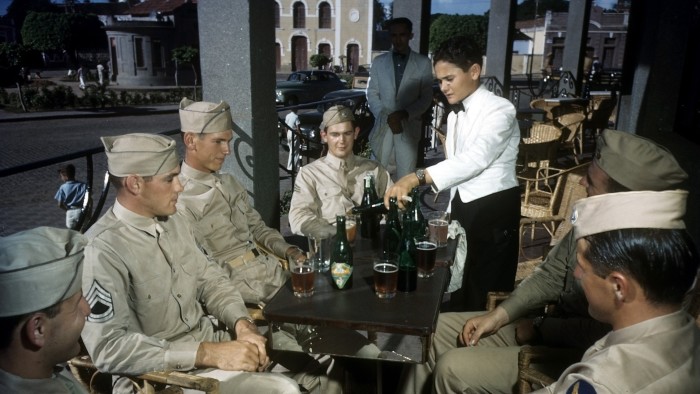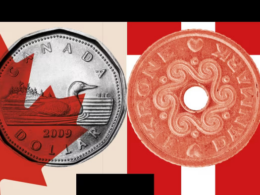In his first three months in office, Donald Trump has announced an extension to the wall on the Mexican border, returned Cuba to the list of “state sponsors of terrorism,” and threatened to annex the Panama Canal.
Trump’s often hardline stance on Latin America follows centuries of intertwined politics, by turns turbulent and collaborative. Indeed, as a leading historian of the western hemisphere attests, the history of the US — especially from independence to the second world war — is tightly tied to the countries to its south.
America, América focuses on these vital connections. Greg Grandin’s argument — the first time it has been made in such depth and for a non-specialist audience — is compelling and written with zest. Grandin is a Pulitzer Prize-winning Yale professor whose previous work has explored the US frontier, Henry Kissinger, and the Ford plantation-city in the Amazon. Here, he focuses on lesser-known stories of US-Latin America relations.
One such forgotten fact is that Spain’s colonies in the Americas were crucial to the outcome of the US revolutionary war. Spain provided aid and up-to-date weaponry to George Washington’s beleaguered army, and fought Britain in the Caribbean and as far north as Lake Michigan. Spain’s support, Grandin reminds us, relied on its colonies’ infrastructure, its mineral wealth, its plantation economy and public goodwill (funds for the decisive Battle of Yorktown, for example, were raised in Havana).
In 1823, after the independence of most of Spanish America, US President James Monroe warned European powers not to interfere in the western hemisphere. The Monroe Doctrine, ambitious and ambiguous, was initially welcomed by the fragile new republics, who feared reconquest. What the Monroe Doctrine didn’t do, however, was prevent interference by the US. By the mid-1820s, as southern slaveholders sought more land, the US was already exploring taking Texas from Mexico. After the Mexican-American war of 1846-48, it had captured more than half its neighbour’s territory.
Much of the US-Latin America relationship, however, has been fraternal. As Grandin conveys, it was particularly cordial under the Democrats Woodrow Wilson (1913-21) and Franklin D Roosevelt (1933-45). Wilson compensated Colombia $25mn for the US-arranged separation of Panama in 1903, and took the Americas’ tradition of international collaboration as his blueprint for Europe after the first world war.
Grandin explains that Roosevelt’s administration, probably the most important in US history, owed a major debt to Latin American ideas. In 1933, two months into his tenure, and with the country still stuck in the Great Depression, hemisphere-wide negotiations in Montevideo led (against the wishes of many US industrialists) to the reduction of tariffs. Along with the devalued dollar, this kick-started US exports and, in Grandin’s words, helped “save the New Deal”. Roosevelt himself said as much on a visit to Rio in 1936: “It was two people who invented the New Deal. The President of Brazil [Getúlio Vargas] and the President of the United States.”
Roosevelt’s good relationship with the rest of the hemisphere was critical during the second world war. Allies in Central America allowed US vessels untroubled access to the Panama Canal, which linked the campaigns in the Pacific and the Atlantic. Roosevelt called the Brazilian air base in Natal, which pokes into the Mid Atlantic, the “trampoline to victory.”
Then there were the critical supply chains — among them petrol, copper, platinum, tin and rubber. “Nobody knows,” recalled one US army official, “how much we relied on the South American and Central American countries for commodities and things that we simply had to have.” In his treatment of the postwar years, Grandin uncovers compelling and little-known statements made by the leading figures of the era. For example, John Foster Dulles, Dwight Eisenhower’s secretary of state, said that without Latin America, “there would have been no Nato.” Winston Churchill went further: “There would have been nothing.”
In return, the Latin American nations, whose economies were overly reliant on the natural resources that had underpinned the war effort, asked President Harry Truman for industrialisation subsidies similar to the Marshall Plan. They didn’t get them.
The US’s refusal was part of its general shift in priorities. With the exception of trying to contain communism (either real or imagined), the US began to think less about the western hemisphere, and more about the world as a whole. “The region fell out of mind,” writes Grandin. “What mattered was a renewed Washington-London alliance, with a focus on a rebuilt Western Europe and, now that Mao was in Peking, a Japan-centred Asia.”
This position on Latin America is, roughly, where we are today. The region remains integral to US interests, but is usually overlooked except when politicians want to challenge immigration, appeal to anti-socialist diasporas, or complain about its neighbours’ ties with China.
Grandin provides the context for all this, and much more. His history is punchy and, although partially informed by a leftist commitment, generally stays within the bounds of objectivity. The array of sources is vast, and despite the book’s length, the narrative pace is superb.
America, América is an agonising appeal for mutually beneficial US-Latin America relations. The US, as the dominant power, must take the lead — as it did under Wilson and Roosevelt. Grandin makes a mighty argument in favour. Don’t be surprised if he wins another Pulitzer.
America, América: A New History of the New World by Greg Grandin Torva £30/Penguin Press $35, 768 pages
Source link









